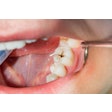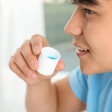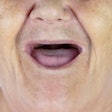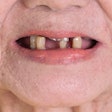
NEW YORK (Reuters Health), Aug 10 - Glibenclamide (glyburide) use has been associated with tooth discoloration in at least five children treated for neonatal diabetes, according to a report in the August issue of Diabetes Care.
This is a previously unrecognized side effect of the sulfonylurea, the authors note. Apart from transient diarrhea, no significant side effects have been reported previously with glibenclamide treatment, they point out.
After observing one patient who experienced tooth discoloration of the permanent teeth while on high-dose glibenclamide, Dr. Janani Kumaraguru from Peninsula Medical School, Exeter, U.K., and colleagues contacted referring clinicians for 66 additional patients with neonatal diabetes resulting from a KCNJ11 mutation who had been treated with sulfonylureas.
Four additional patients (about 7.5% overall) experienced some degree of tooth discoloration 1 to 55 months after being switched from insulin to glibenclamide.
The severity of tooth discoloration ranged from easily removable tooth staining to nonreversible discoloration and loss of enamel, the investigators say.
In several cases, they point out, the patients had been treated with glibenclamide syrup or had chewed or crushed the tablets.
"This previously unreported association warrants further investigation," Dr. Kumaraguru and colleagues conclude. "While the cause is uncertain, patients should probably be advised not to chew tablets," they add.
Diabetes Care 2009;32:1428-1430.
Last Updated: 2009-08-07 17:40:05 -0400 (Reuters Health)
Copyright © 2009 Reuters Limited. All rights reserved. Republication or redistribution of Reuters content, including by framing or similar means, is expressly prohibited without the prior written consent of Reuters. Reuters shall not be liable for any errors or delays in the content, or for any actions taken in reliance thereon. Reuters and the Reuters sphere logo are registered trademarks and trademarks of the Reuters group of companies around the world.



















